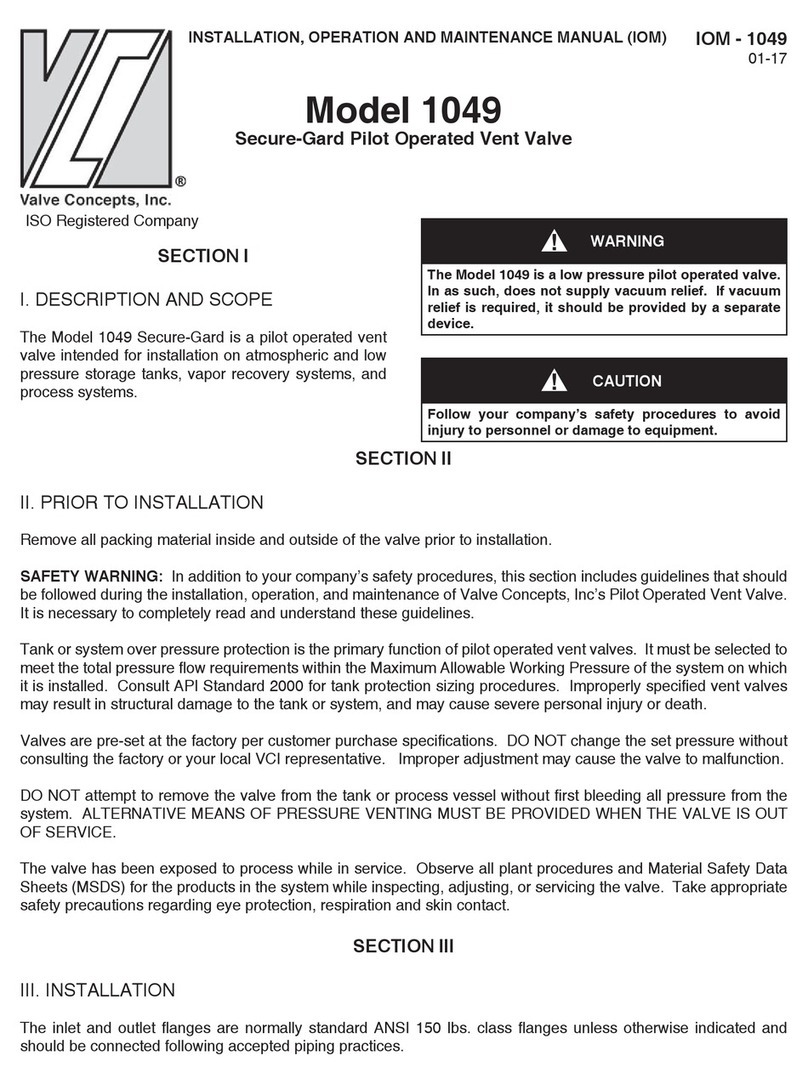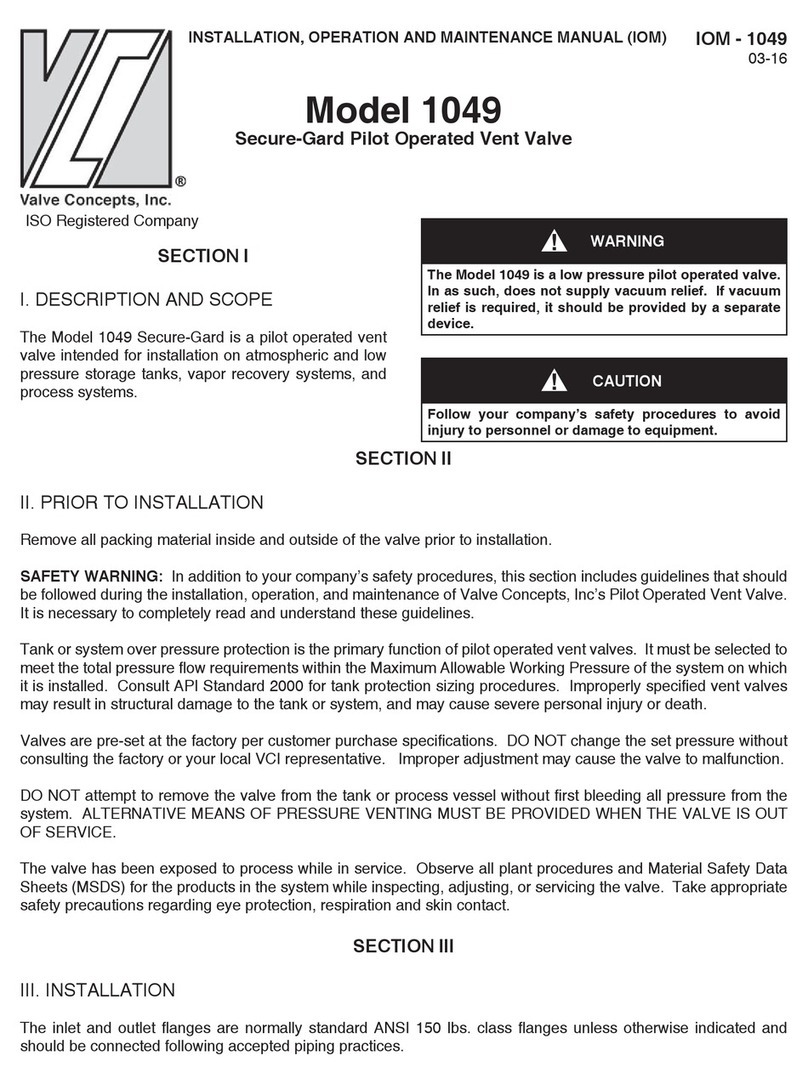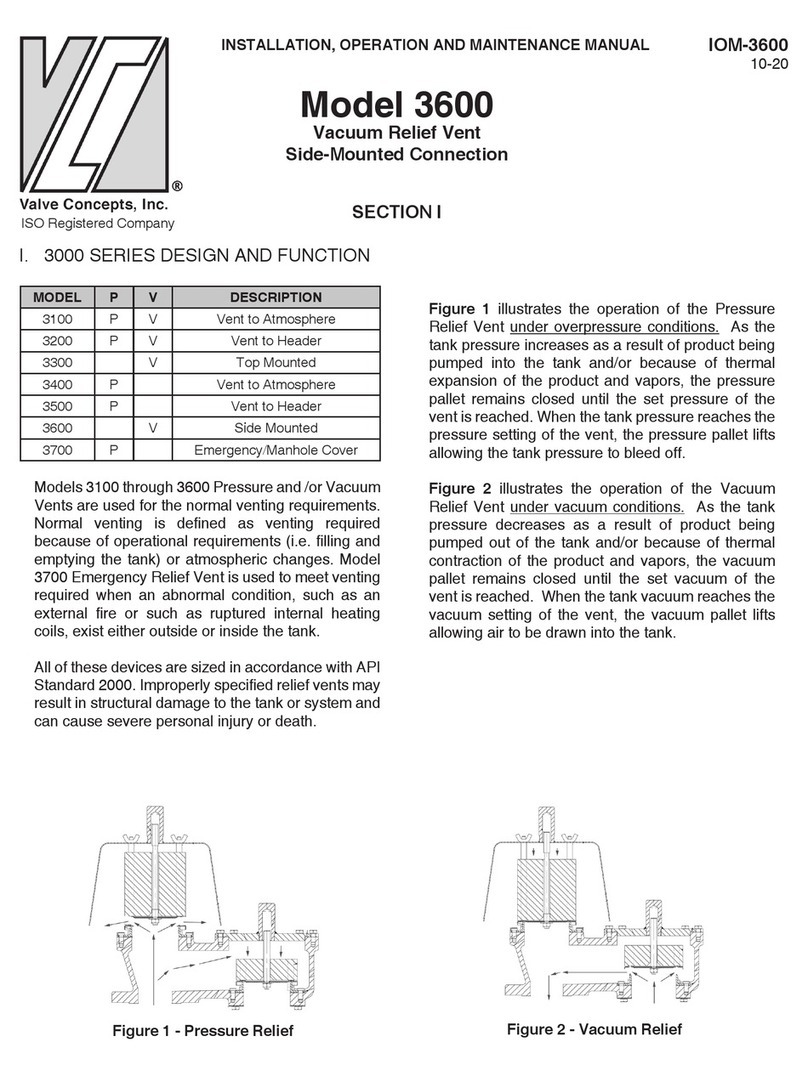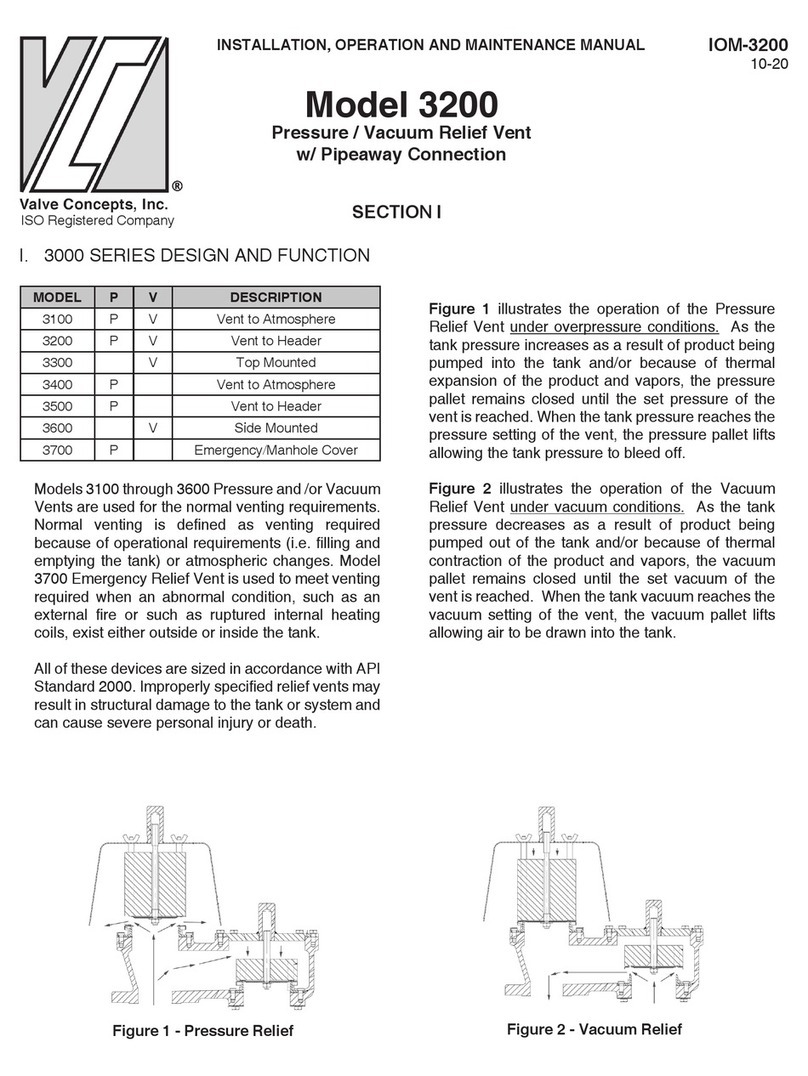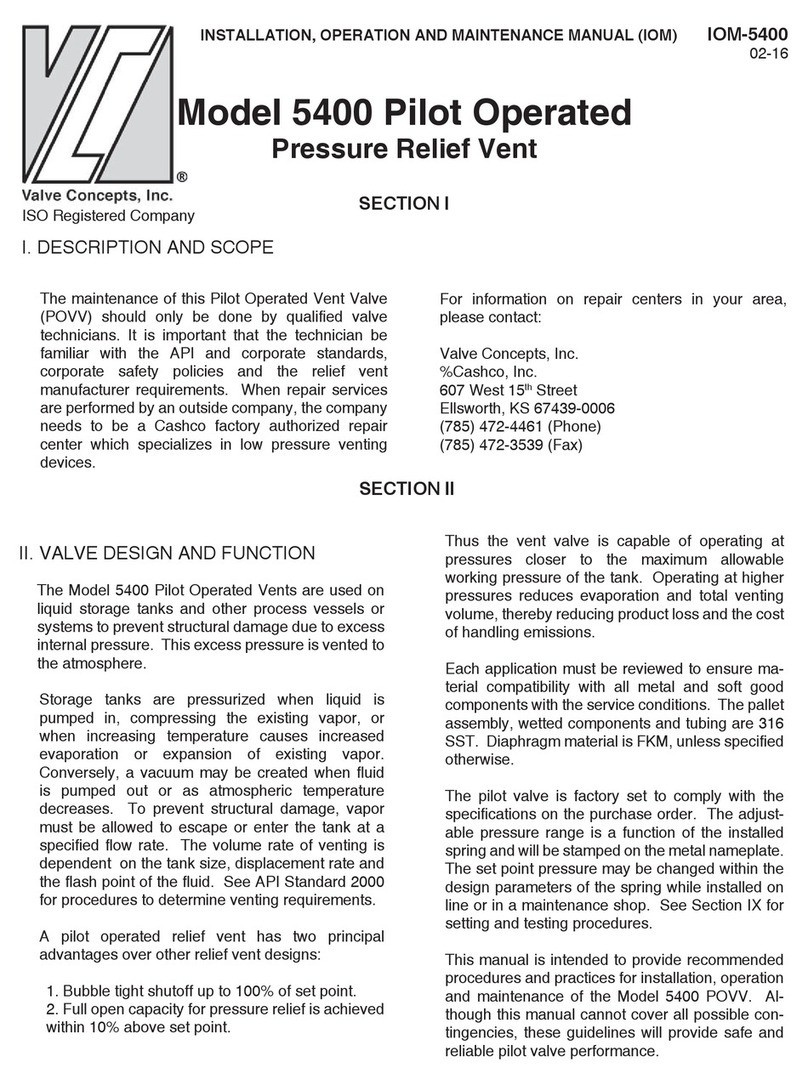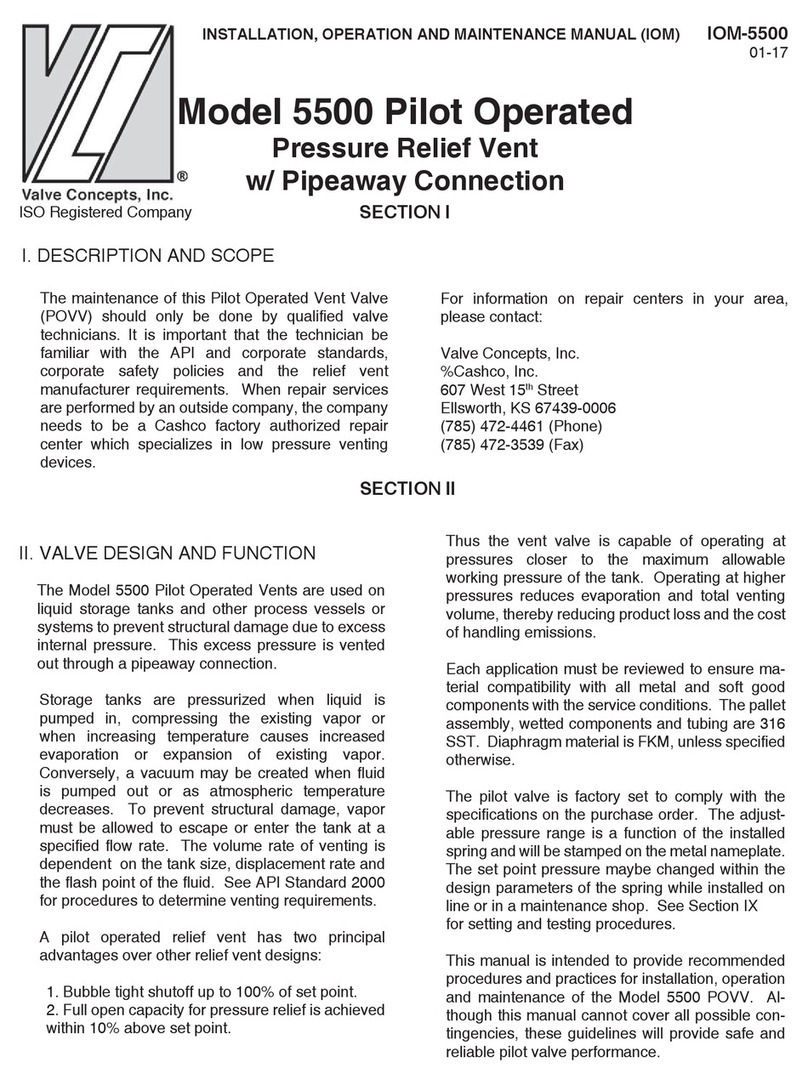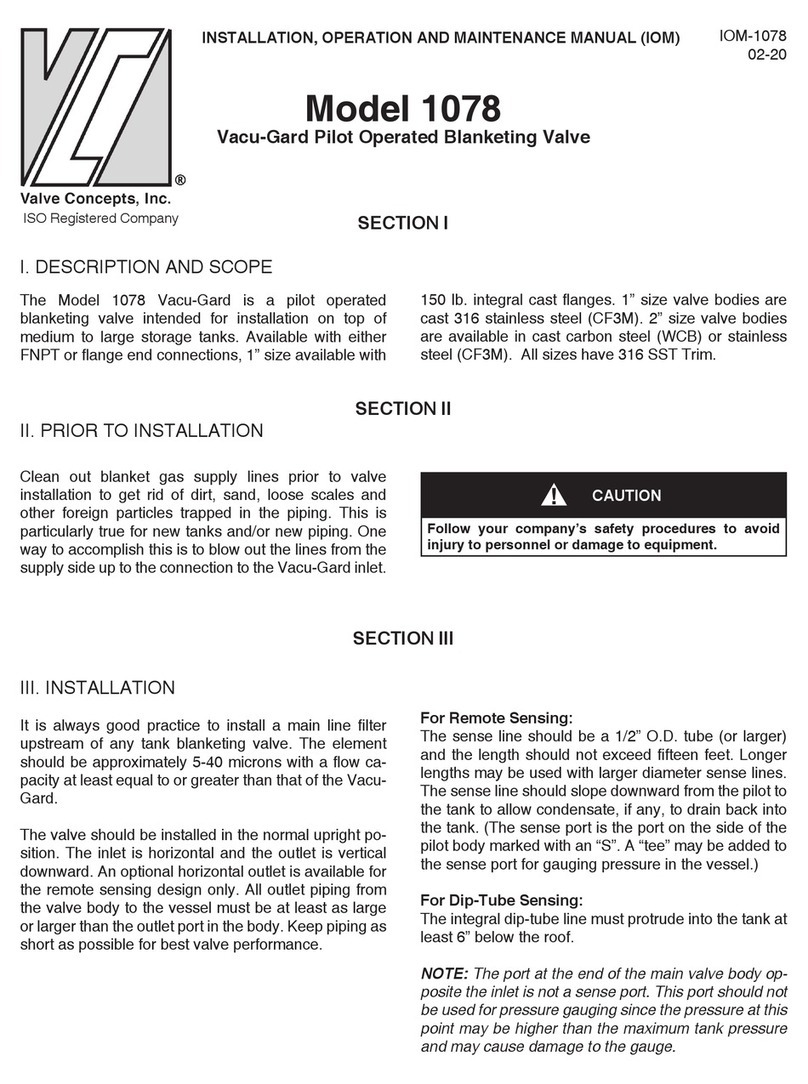
4IOM-3100
Tank or system protection is the primary function
of the weight loaded Pressure and/or Vacuum
Relief Vent. As a safety device, it is very important
that maintenance/inspection be done on a regular
interval. Maintenance should only be done by a
qualified technician. Valve Concepts recommends
that all service be performed at the factory or a
factory authorized repair center. For information on
repair centers in your area, please contact factory.
Maintenance procedures hereinafter are based
upon removal of the relief vent unit from the tank
where installed.
Owner should refer to Owner’s procedures for removal,
handling and cleaning of nonreusable parts, i.e.
gaskets, suitable solvents, etc.
NOTE: Item Numbers that are specific to FRP body
material are in parenthesis and underscored; i.e. (8).
See Figure 11. Item Numbers that are generic to all
body materials are not underscored; i.e. (1). See
Figures 3 thru 9 where applicable.
To Dis-assemble: Remove the weatherhood wing
nuts (12), (10 & 33) lift off weatherhood (13) and
screen (31).
Remove vacuum cover cap screws (10), vacuum
cover (8) and the TFE tape / rope seal (34).
Inspect weatherhood (13), screen (31), and cover
(8) for corrosion, damage or foreign material. Clean
with a suitable solvent, replace as necessary.
NOTE: During re-assembly, install new TFE tape /
rope (34). For FRP material - nuts (10) for cover (8)
should be tightened to 50 in. - lbs. (5.6 Nm).
Remove pressure and vacuum pallet assemblies,
including any loading weights (21 & 28) that may
be on the pallets (19,26). NOTE: As the pallets
are removed from the vent, identify each assembly
(including the stack of weights) by tagging as
“pressure” side or “vacuum” side.
Clean and inspect pallet assemblies. Inspect the
diaphragms (18,25) and replace if necessary.
To Replace Diaphragms - Std. Construction:
See Figure 4. Secure pressure or vacuum stem
assembly (23,30) in a soft-jawed vise with short,
threaded end up. Remove washer and nut (14).
For settings above 32oz/in2See Figure 5. Remove
machine screws (43) CCW.
Lift up to remove diaphragm retainer (17,24),
diaphragm (18,25) and pallet (19,26) and stiffener
plate (20,27). Clean parts with a suitable solvent,
replace as necessary. NOTE: Before re-assembly,
apply TFE paste to threads of the stem and around
center hole on the pallets (19,26).
Place stiffener plate (20,27) over threaded end of
stem. Set diaphragm (18,25) and diaphragm retainer
plate (17,24) over end of stem. Install washer and
nut (14) tight on stem.
For settings above 32oz/in2See Figure 5 for
assembly. Install machine screws (43).
Inspect and clean pressure / vacuum seat ring(s)
(16). Check seat surface for any nicks, corrosion,
pitting or foreign material. Seat surfaces must be
clean and smooth for diaphragm and pallet to seal
properly. NOTE: FRP seat surfaces are integral
inside the body.
To Remove Seat Rings (except for FRP body
material): Make a match mark between the seat
ring and the body. Rotate cap screws (15) CCW
and remove. Remove pallet guides (22,29). (Use
flats on the pressure guides or the slot on top of the
vacuum guides and rotate CCW to remove.) Mark
the location of each guide on the seat ring (16)
flange for reference at re-assembly.
Lift up to remove seat rings (16) and TFE tape /
rope seal(s) (34.1). (There is no rope seal on FRP
material.) Inspect guides (22,29) and inside cavity
of the body (1) for any corrosion or product build up.
Clean all parts as necessary.
SECTION V
V. MAINTENANCE
WARNING
When assembling a P/V vent, always put the pressure
(long stem) and vacuum (short stem) pallet assemblies
back in their original location and ensure that the stem is
straightandfitsintotheguideinthecoverorweatherhood.
If the pressure and vacuum pallet assemblies are mixed
at re-assembly, the settings will be changed and the flow
for the vacuum side will be restricted.
If the stem is cocked at an angle, pallet lift may be com-
pletely blocked. An over-pressure can occur if any of
these three conditions happens. This can cause a tank
failure, severe personal injury and material damage.
